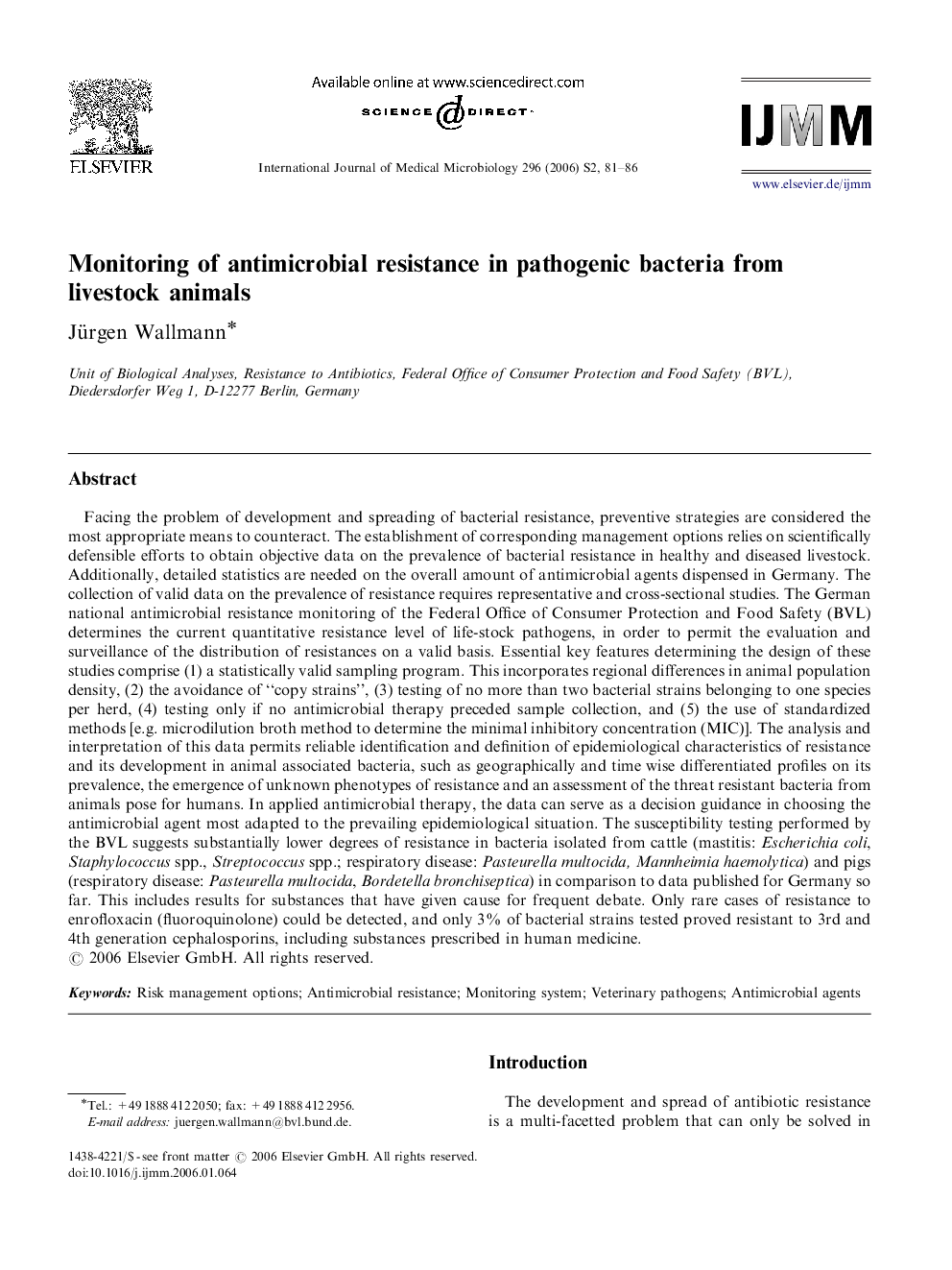| کد مقاله | کد نشریه | سال انتشار | مقاله انگلیسی | نسخه تمام متن |
|---|---|---|---|---|
| 2054629 | 1543759 | 2006 | 6 صفحه PDF | دانلود رایگان |

Facing the problem of development and spreading of bacterial resistance, preventive strategies are considered the most appropriate means to counteract. The establishment of corresponding management options relies on scientifically defensible efforts to obtain objective data on the prevalence of bacterial resistance in healthy and diseased livestock. Additionally, detailed statistics are needed on the overall amount of antimicrobial agents dispensed in Germany. The collection of valid data on the prevalence of resistance requires representative and cross-sectional studies. The German national antimicrobial resistance monitoring of the Federal Office of Consumer Protection and Food Safety (BVL) determines the current quantitative resistance level of life-stock pathogens, in order to permit the evaluation and surveillance of the distribution of resistances on a valid basis. Essential key features determining the design of these studies comprise (1) a statistically valid sampling program. This incorporates regional differences in animal population density, (2) the avoidance of “copy strains”, (3) testing of no more than two bacterial strains belonging to one species per herd, (4) testing only if no antimicrobial therapy preceded sample collection, and (5) the use of standardized methods [e.g. microdilution broth method to determine the minimal inhibitory concentration (MIC)]. The analysis and interpretation of this data permits reliable identification and definition of epidemiological characteristics of resistance and its development in animal associated bacteria, such as geographically and time wise differentiated profiles on its prevalence, the emergence of unknown phenotypes of resistance and an assessment of the threat resistant bacteria from animals pose for humans. In applied antimicrobial therapy, the data can serve as a decision guidance in choosing the antimicrobial agent most adapted to the prevailing epidemiological situation. The susceptibility testing performed by the BVL suggests substantially lower degrees of resistance in bacteria isolated from cattle (mastitis: Escherichia coli, Staphylococcus spp., Streptococcus spp.; respiratory disease: Pasteurella multocida, Mannheimia haemolytica) and pigs (respiratory disease: Pasteurella multocida, Bordetella bronchiseptica) in comparison to data published for Germany so far. This includes results for substances that have given cause for frequent debate. Only rare cases of resistance to enrofloxacin (fluoroquinolone) could be detected, and only 3% of bacterial strains tested proved resistant to 3rd and 4th generation cephalosporins, including substances prescribed in human medicine.
Journal: International Journal of Medical Microbiology - Volume 296, Supplement 2, 23 June 2006, Pages 81–86